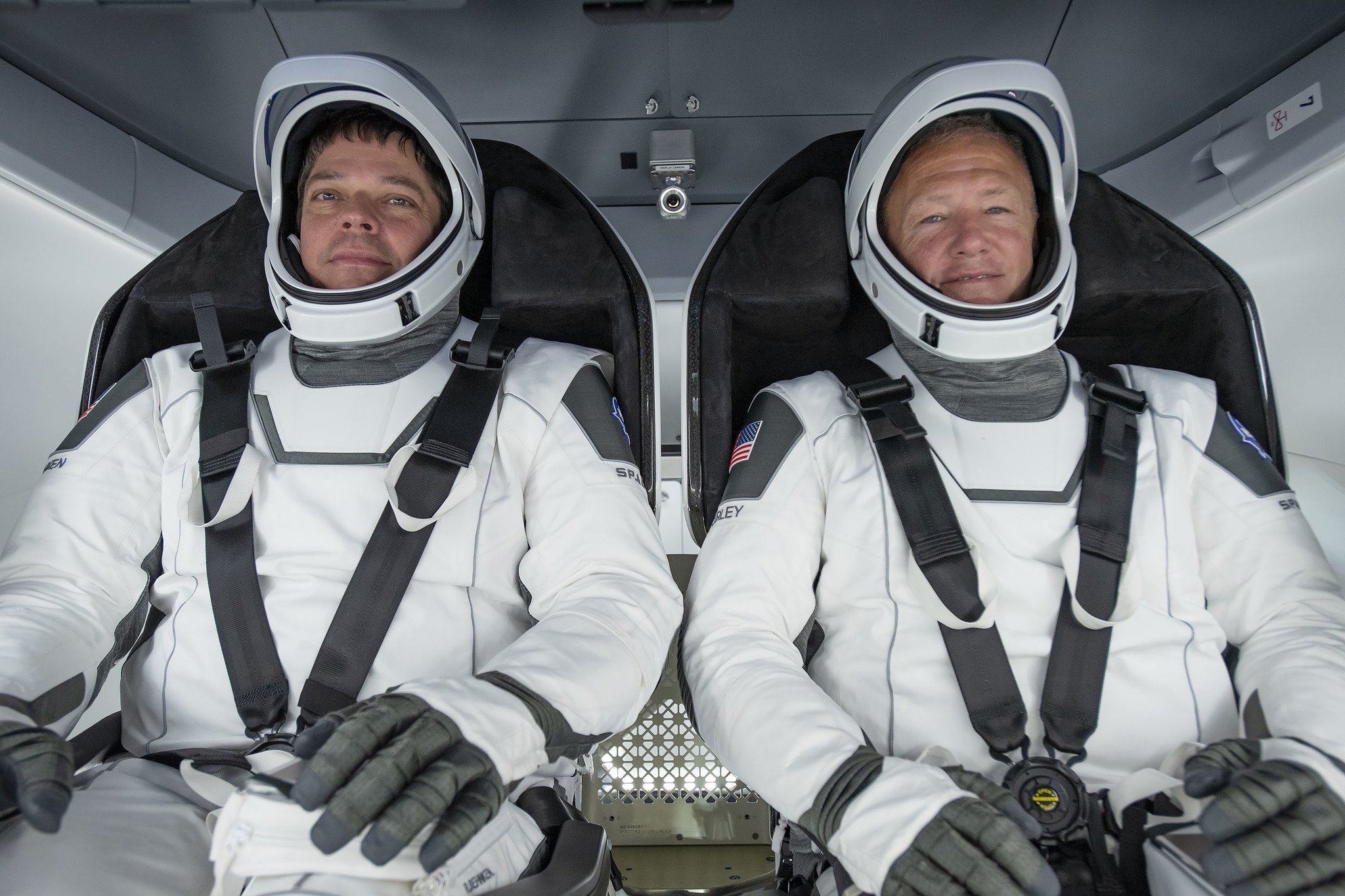How to watch the SpaceX Demo-2 launch from Florida to the ISS
It's the first manned flight from the United States since the space shuttle retired in 2011, and the first manned flight from a private company

There's just something different about a SpaceX launch. Maybe it's the fact that we have more live coverage of spaceflights than ever before. Maybe it's the downright awe-inspiring views of seeing rockets not just launch and fall away, but safely return to Earth to be used again. Or maybe it's the cheering crowds inside the SpaceX facilities that we can watch and hear for ourselves.
And at 3:22 p.m. Eastern today, May 30, we're going to have a(nother) chance to witness another first in the life of SpaceX as we see the first manned launch from United States soil since the retirement of the space shuttle in 2011, as part of NASA's Commercial Crew Program.
This is, of course, a big deal. And like pretty much every other SpaceX launch in recent memory, we'll be able to watch the whole thing, live.
In fact, it's going to be pretty impossible to miss.
When is the Demo-2 launch re-scheduled?
The May 27 launch of Demo-2 was scrubbed in the final minutes due to weather over the east coast of Florida. Demo-2 will try again for a 3:22 p.m. Eastern launch today. If the weather (or something else) doesn't cooperate again, they'll try again at 3 p.m. Eastern on Sunday, May 31, 2020.
What's the best way to watch the SpaceX launch of Demo-2?
Basically, open a computer or turn on a TV. Everyone is going to be watching this. (In fact, if you're reading this, look up. There it is.) If you want to watch directly from NASA's feeds, here's how:
NASA also is available directly inside a few streaming services, for free. That includes:
The latest updates, reviews and unmissable series to watch and more!
- The NASA channel on Roku (free)
- The NASA channel on Pluto TV (aptly named, and also free)
If you're in Florida, here's how to watch the launch:
- Look up and to the east.
And if you're a subscriber of Hulu with Live TV, there's a special NASA section there, too.

Watch the SpaceX Demo-2 flight
Watch the first manned launch from the U.S. in nearly 20 years
The flight of SpaceX Demo-2 to the International Space Station marks the first time a manned flight has launched from the United States since the space shuttle program ended in 2011.
Who are the astronauts onboard Demo-2?
There are two Americans piloting Crew Dragon as part of NASA's Commercial Crew Program, which is exactly what it sounds like — commercial companies providing the vehicles for NASA.

The U.S. astronauts on Demo-2 are Robert Behnken and Douglas Hurley. The two have been working with SpaceX from nearly the beginning of this program. (The Dragon spacecraft ultimately can carry as many as 7 passengers.)
Behnken serves as the joint operations commander on this mission. He's responsible for the rendezvous with the ISS — including docking and undocking — as well as the other Demo-2 tests they'll be working on while the craft is docked with the ISS. He's been an astronaut since 2000 and twice flew on the space shuttle, in 2008 and 2010. He performed spacewalks three times on each of those missions. He's from St. Anne, Mo., and was a flight test engineer in the U.S. Air Force before joining NASA.
Hurley — a test pilot in the U.S. Marine Corps before joining NASA — is the spacecraft commander for Demo-2 and is responsible for launch, landing and recovery. (Among other things, of course. He won't just be hanging out at the ISS bar waiting for the ride home.) He was pilot and lead robotics operator on the space shuttle in 2009, and on the final space shuttle mission in 2011.
What is Demo-2?

This is the second demonstration flight for the SpaceX Crew Dragon system. (The Demo-1 flight happened back in March 2019.) There will be two U.S. astronauts on board. They'll launch from Cape Canaveral, Fla., and rendezvous with the International Space Station after about a day.
We don't actually know how long the two astronauts will remain on the ISS. This test flight is good for up to 110 days, but the exact length of this mission depends on when the next commercial crew launch is ready to go. NASA says a fully operational (and certified) Crew Dragon will be able to stay in space as long as 210 days.
Once they're up there, Behnken and Hurley will become part of the Expedition 63 crew aboard the International Space Station where they'll perform experiments alongside the other crew members.
When they eventually return to Earth, Behnken and Hurley will splash down in the Dragon Crew spacecraft in the Atlantic Ocean, not too far from where they started at Cape Canaveral.
The Demo-2 astronauts won't quite hop out of a Tesla Model X and into Crew Dragon before launching from Florida, but you get the idea.
What's the big deal about this launch?
U.S. astronauts have been going to space consistently for decades. But since the end of the space shuttle program in 2011, we've been doing so atop Russian rockets, launching and landing thousands of miles away from the United States. So not only does this launch represent the first manned mission from U.S. soil in nearly a decade, it's also the first time we've gone so aboard a privately run rocket and capsule — the Space X Falcon 9 and Crew Dragon, respectively.
This is a test flight. And as such, it's a huge step toward NASA certifying SpaceX for regular service to and from the International Space Station.
The journey to this point has been a long one. We're more than a year out from the Demo-1 launch, which occurred on March 8, 2019, when the Crew Dragon capsule safely returned from an unmanned five-day mission at the International Space Station. Since then, Crew Dragon has undergone a pad abort test, another orbital flight test, and an in-flight abort test in January 2020.
Didn't SpaceX just blow up a Starship or something?
On Friday, May 29, SpaceX was testing a completely different kind of rocket hundreds of miles away. The static test of the "Starship" rocket prototype was exactly that — a test of a different launch vehicle they're working on to take humans much farther than low-Earth orbit. The test was never meant to be anything more than that — a ground-fire of a test platform.
The prototype exploded for some reason . But other than the fact that it happened the day before the rescheduled Demo-2 launch — and, again, it was several hundred miles away from the East Coast of Florida, in Boca Chica, Texas — one has absolutely nothing to do with the other.
A Starship prototype just exploded in Boca Chica, Texas during static fire testing. SpaceX was granted an FAA license yesterday to conduct suborbital flights, not sure when those first test flights will happen. Video/live feed from @NASASpaceflightpic.twitter.com/dqnQv1lqBV — Joey Roulette (@joroulette) May 29, 2020 May 29, 2020

